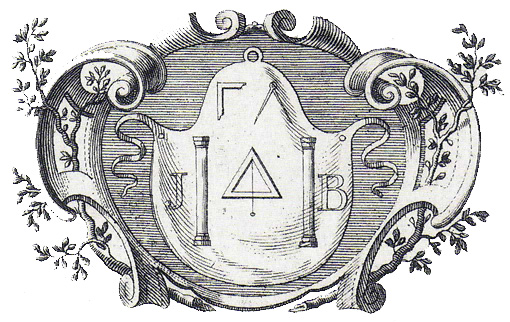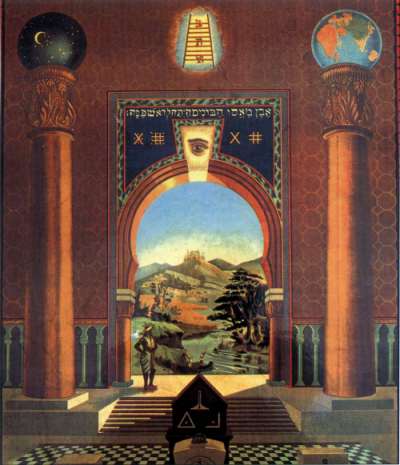Craft Degrees practiced under the MHCThe Craft is worked under the authority of the Masonic Hgh Council .
The Craft is organized under several Symbolic Rites and Ceremonies that each Lodge works:
- Ancient York Rite
- Ancient English Rite
- Scottish Rectified Rite
- Ancient and Accepted Rite
- Ancient and Primitive Rite
- Schroeder Rite
- Swedish Rite
- Adoniram Rite
- Filosophic Rite
- And others Proper Masonic Craft Rites
Mark Mason
The degrees that the MHC confers and has jurisdiction over are:
Craft Freemasonry
1 - Entered Apprentice
2 - Fellow Craft
Complementary Ceremonies to the FC Degree Mark Man, Mark Mason
MARK MASON
The qualification for joining Mark is that of being a Master Mason.
The ceremony is called The ceremony of Advancement and chronologically follows that of the Fellowcraft. In fact it is often referred to as the completion of The Second Degree.
As in the Craft the meetings are held in a Lodge and the ceremony incorporates two ceremonies.
The candidate is first acknowledged as a Mark Man and then Advanced to the degree of Mark Master Mason.
The Degree relates to a period in the building of the Temple at Jerusalem prior to the Death of Hiram Abiff.
The Regalia of the Ceremony is an Apron and Jewel.3 - Master Mason
Complementary ceremonies to the Master Mason Degree given in a Lodge are:
Installed or Past MasterThe Ancient English Rite
The Original and Ancient English Rite. This is a complete and beautiful Masonic Rite its manuscripts have been preserved in the libraries of European Aristocracy. The Rite is a proper and complete Masonic Craft system of Freemasonry as practiced by Ancient English Freemasonry. The Rite is one of the most symbolically correct Rituals in use by Craft Freemasonry Lodges. At the moment it is only practiced by the Regular Grand Lodge of England ( 1705 - 2005 ) and all Grand Lodges recognized by the Masonic High Council of England and Wales the Mother Masonic High Council of the World.
Schroeder’s Rite
Frederic-Louis Schroeder (1744-1816), Director of the Municipal Theatre of Hamburg and Grand Master of the Grand Lodge of Hamburg, spent almost twenty years in shaping the final form of the Rite to which his name is attached. Allergic to the chivaleresque side which was characterising the symbolic aspects of most of the Superior Grades, he reformed the ceremonies of his Obedience with the idea of greater simplicity, in reinstalling the use of the ancient English Rite and in taking into consideration only the first three degrees. The Schroeder System was the most democratic of all Rites practised in Germany before World War II, which made quite naturally its success. At the moment, it is practised by the Grand Lodge of Ancient Masons Free and Accepted of Germany, by the Grand Lodge of Austria and by some Lodges of the Grand Lodge of Switzerland Alpina.
The Ancient and Accepted Rite
In 1732, a Lodge was founded in Bordeaux by three English Naval Officers and was given the name of The English Lodge. In 1766, it applied for and received a Warrant from the Grand Lodge of England, eventually becoming No. 204 on their Register. It is now La Loge Anglaise (204), No. 2 on the Register of the Grande Loge de France.
From this Lodge sprang several others, at least one of which worked some, probably not more than fourteen, of the ‘higher degrees’ that were created in France in the second quarter of the eighteenth century. The Mother Lodge confined itself exclusively to the three craft degrees and was hostile to the newly-invented ones.
The Scottish Rite RectifiedThe origins of this Rite go back to the System of Strict Observance, founded in 1756 by Baron von Hund, initiated in Paris in 1754 in the Superior Grades Chapter of Clermont by Charles-Edouard Stuart. This Rite invoked of course, as most of the Systems of the Superior Grades at that time, the Temple filiations.
On the death of Baron von Hund in 1776, the System of Strict Observance, constituted in Scottish Directories, was growing and was gong to define its objectives during the Conventions in Lyon, 1778, and in Wilhelmsbad, 1782, under the presidency of its new Grand Master, the Duke Ferdinand of Brunswick. Since then, the System took the name of Scottish Rite Rectified and is composed of Lodges of St. Andrew, on the one hand, corresponding to the Scottish Master Grade, and the interior Order, on the other hand, comprising of “Ecuyers Novices” and the charitable Chevaliers of the Holy City (CBCS). A Grand Priory organised into “Commanderies” and Prefectures, directed the whole system.
The Scottish Rite Rectified is practised in England, France, Belgium, Switzerland, Portugal and Spain.
NOTE: Concerning the so called Emulation Workings
Created in 1813 by Peter Gilkes. It gets its name from the Lodge of “Emulation of Improvement” which met for the first time in October 1823 in Freemason’s Hall in London. The Emulation Workings are a weak and a distant form of what a Masonic Rite should be.
If you have any questions or comments, we would be pleased to hear from you.
masoniccouncil@gmail.com
www.rgle.org.uk

